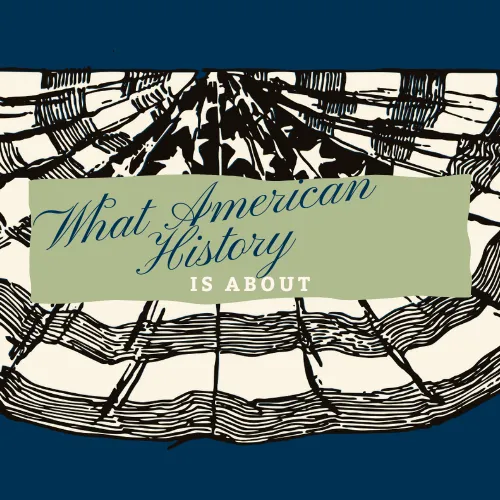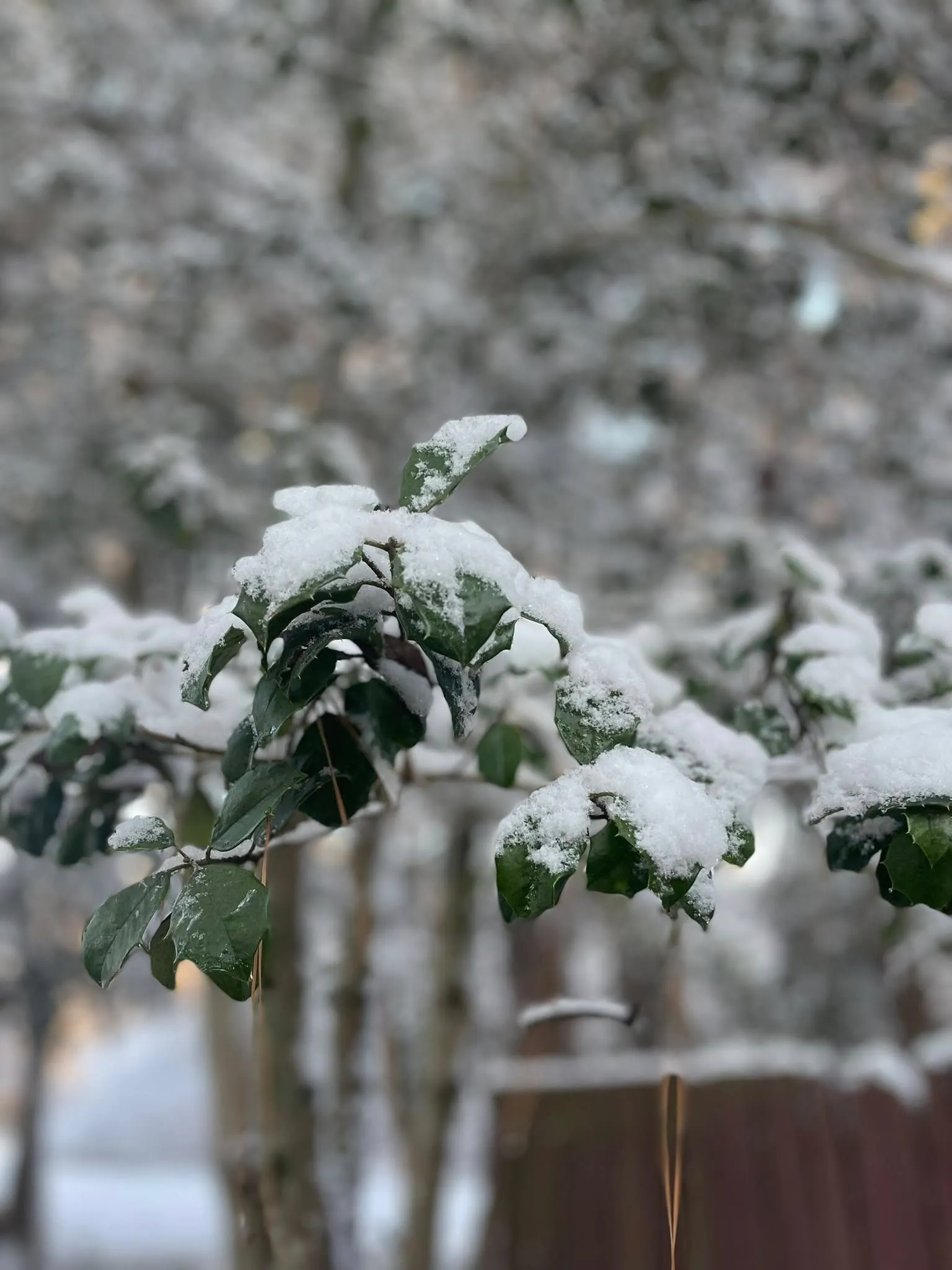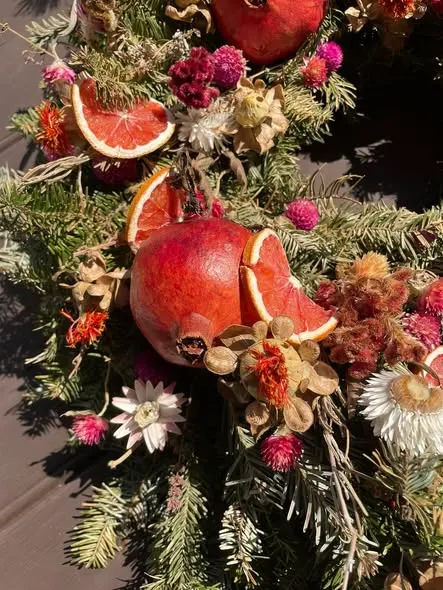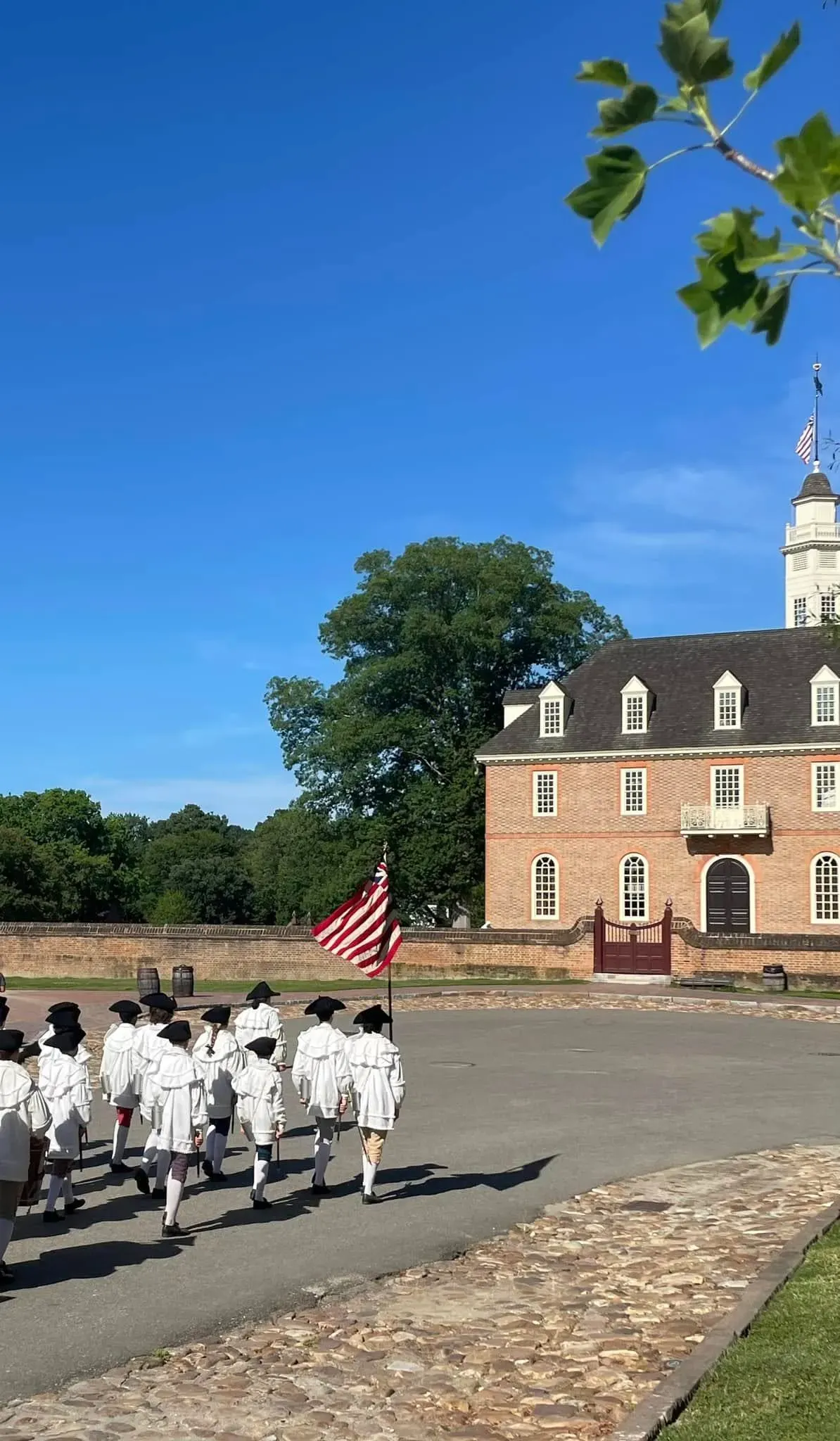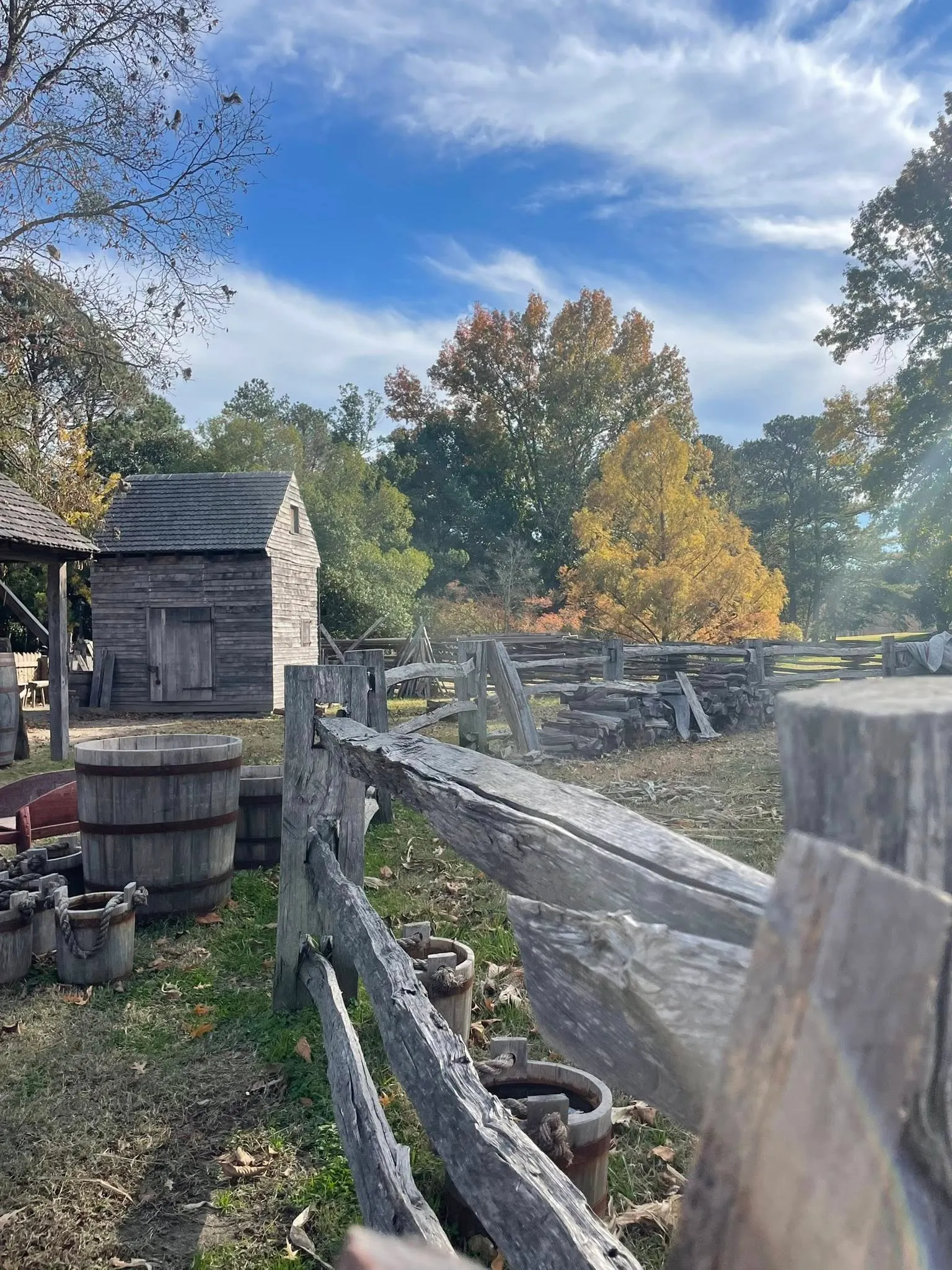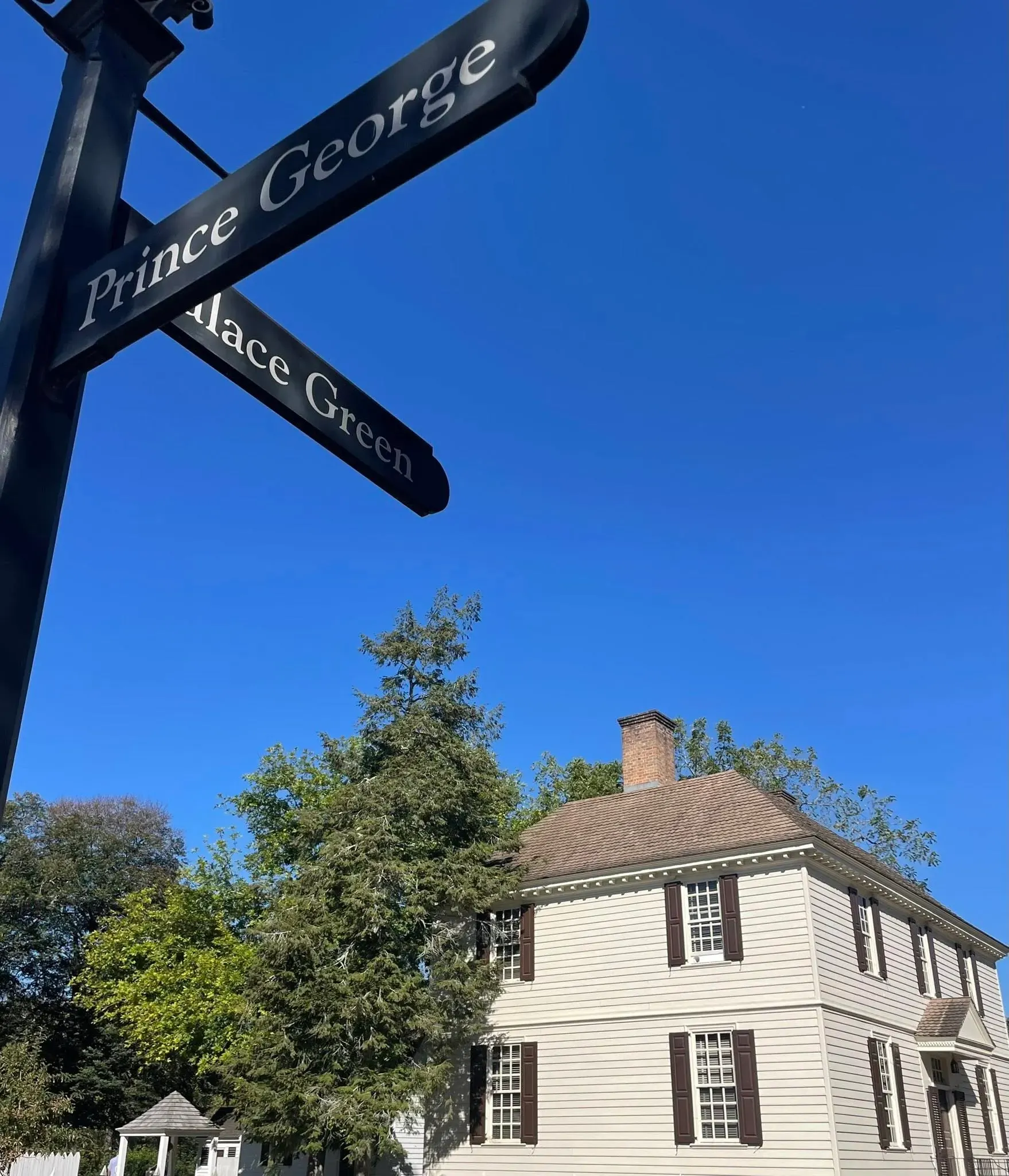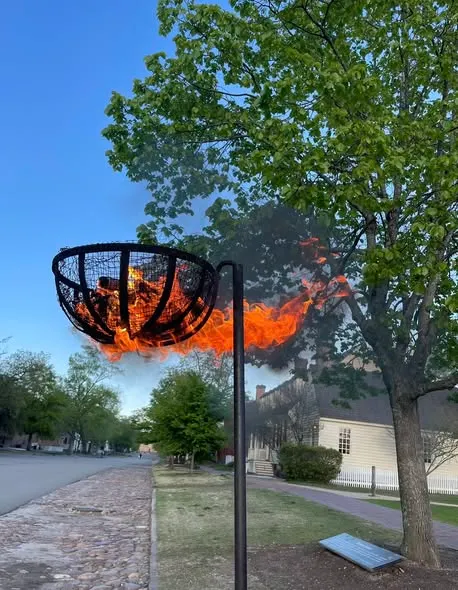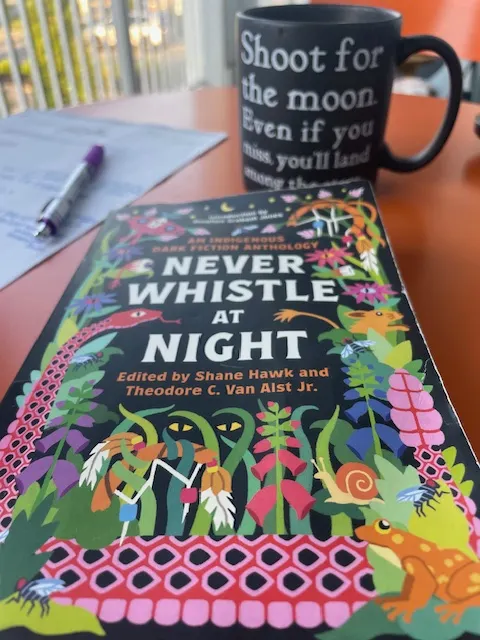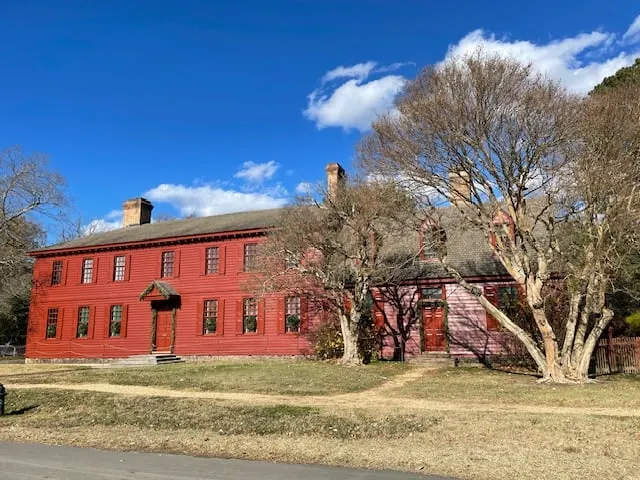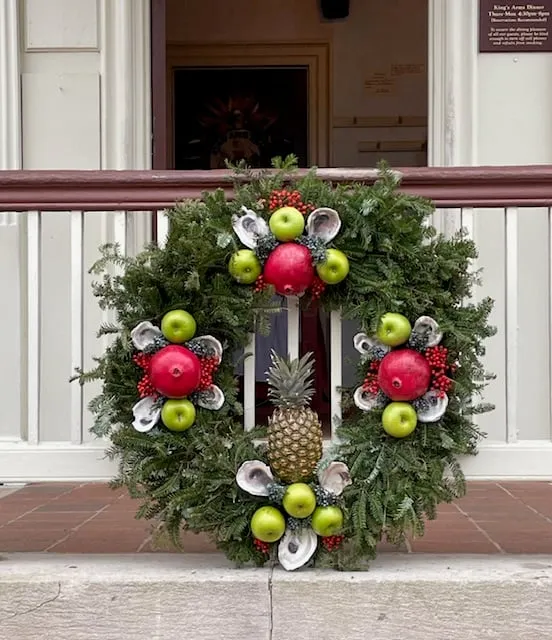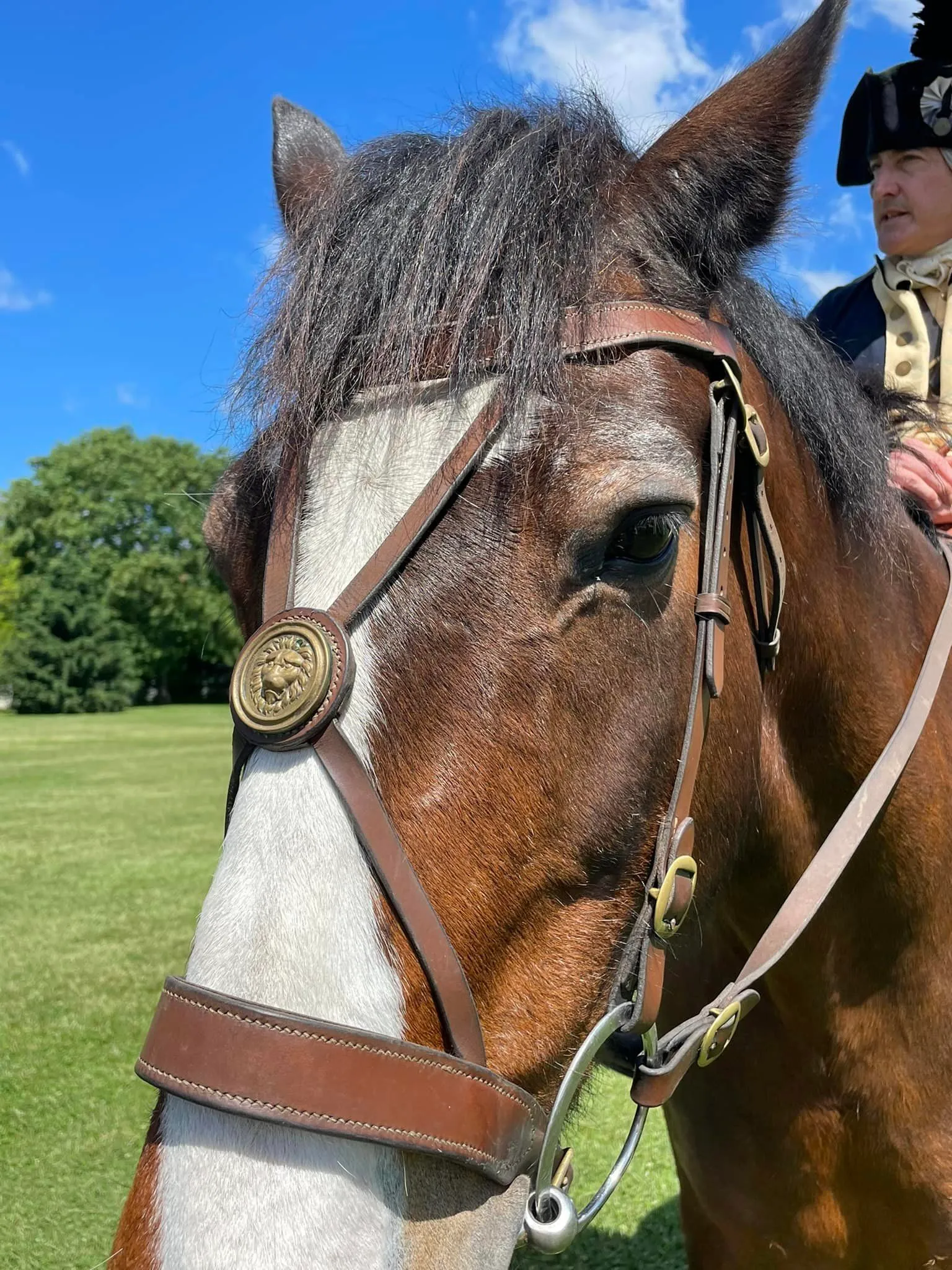I Went to the Library to Learn About the Rare Breed Program but Left Wondering About Sheep.
My fascination about sheep in the Colonies started with a book on the "blue book" shelves.
When I found out about the Rockefeller Library, I dropped in and got a bit of a tour. The set of blue books on the shelves around the corner behind the main desk grabbed my attention: the contents were compiled by Colonial Williamsburg employees, researchers, and volunteers.
Topics: everything (or it feels like it!). From building architecture to how candles are made, it's clear people around here get passionate. And want to share what they've learned.
Sheep are no exception. My thought was to scan the blue books for rare breed research and it's why I grabbed the book on sheep. But instead, I landed on a book filled with excerpts of historical documents referencing sheep.
And no, I wasn't disappointed. Instead, I went a different direction in my topic idea!
RELATED: My post sharing what I plan to write about on this blog- it may give you insight into why I wrote about sheep!
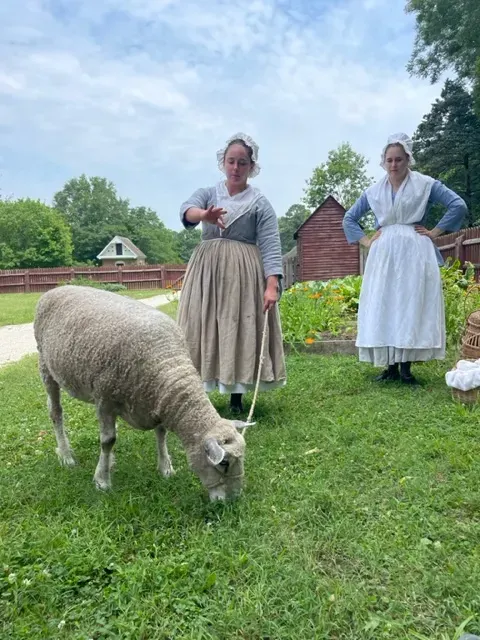
Rare breed presentation in CW.
3 primary sources worth mentioning, all found in the blue book.
Laws.
The earliest mention of sheep in the blue book were laws created in Jamestown dating to the 1600s!
One of the earliest was Act LXV (9th Commonwealth Henings Statues of Virginia, 1, 463): "No mares or sheep transported out of the colonies..." and if you did it: penalties determined by the Governor and his council.
Clearly, there was always concern to keep sheep here and ensure we have plenty. There seemed to be continuous laws focused on sheep preservation.
In 1775, during the Revolutionary years, the Virginia Gazette (Pinckney) shared a unanimous resolution of the Delegates in Richmond stating that no lambs under 4 years old can be sold to butchers, killed for market and so forth.
Another example: an earlier 1768 Virginia Gazette (Purdie and Dixon) article, when tensions were high between England and the Colonies, talks about how much we Americans loved sheep. And I quote: "...American Colonies are sparing no expense to be furnished with the best English rams and sheep in order to promote the breed."
Diaries.
Landon Carter was a person in history who was not only passionate about agriculture, but about writing his experiences and thoughts on just about everything down.
In the blue book I found, there were multiple entries from Mr. Carter specific to sheep. Especially discussion of lambing and his experiences with lambs. If you can find excerpts from diaries on topics you're interested in, what a fantastic discovery!
Letters.
The more I learn about the complex mind and life of Thomas Jefferson, the more I want to learn.
I know I've been tossing the word complex out there quite a bit, but it's the truth about history and about humans.
Jefferson is well-known for his political imprint on history, and some may well know his intense interest in architecture, but what about agriculture including livestock? He and Washington, as well as Madison I've recently learned, were way into it.
In April of 1812, Jefferson wrote E.I. Dupont from his home at Monticello. In that letter, he discussed his interest in getting his Merino wool he plans to shear over to Dupont. The reason: manufacturing it into cloth. It seems to be a last-minute addition to the letter as I read it, not the main point.
The idea that these two powerhouse men of the time shared correspondence in passing about manufacturing cloth, something vital to the independence of America economically, is compelling to share.
You can read the full letter here.
Disclaimer: As a blogger, I use affiliate links sometimes! I may receive commission from purchases I share; it does not change your price but sometimes you might get a discount.
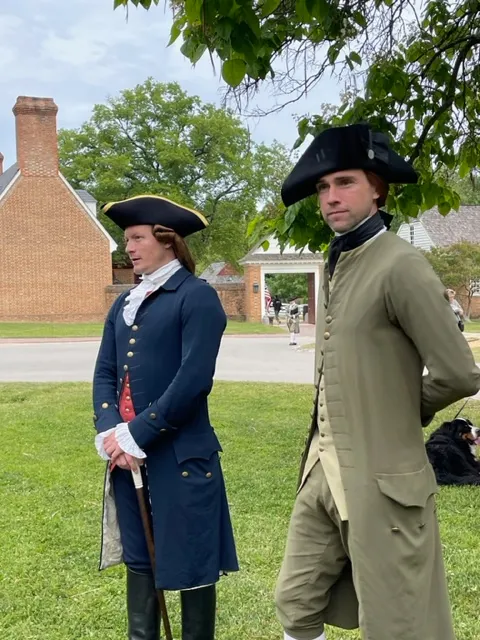
Thomas Jefferson and Col. Washington on the Palace Green
And then I heard about, learned about, and asked about sheep for days.
Sheep in agriculture.
Stories coming direct from the Nation Builders of CW.
New programming here in CW highlights one of our favorite hangout spots, Farmer Ed's field and living history farming site. This summer, for a few days a week, Nation Builders are at the farm to talk agriculture.
I'm loving it!
Last week, I got to discuss sheep with Colonel Washington and James Madison.
Note: I use the historical names when referencing programs, events, and conversations where the actor/interpreters were in character.
Washington answered my question about his purpose for having 'illegal' sheep.
Ok, it seems that "having" them wasn't illegal. What seems to have been illegal according to CW staff I've spoken with, is for England to export certain breeds to the Colonies. Specifically breeds known to produce excellent wool.
Why? Because manufacturing wool was a MAJOR industry in England and the role of the Colonies was to provide raw materials, not replace or compete with English jobs.
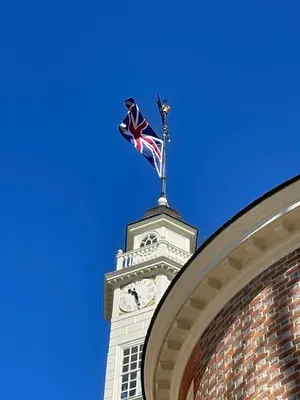
Back to the Colonel.
He let me know that having them on his land was for both agricultural purposes and making a political statement. Clearly, he couldn't produce enough wool to compete with England's mass production but by doing what he could on and with his property, it was a bit of a you-know-what-finger (my words, not his) to the King.
Further, he and George Mason added language into The Fairfax Resolves disallowing the slaughter of lambs and instructing them to be sent to poorer folks. The goal: increase the overall sheep population.
How about Madison?
I learned a few things including:
- he wore clothes made from his own Merino wool to his presidential inauguration
- he was an early owner of Merino sheep
And this! The Madison sheep history continues with the Fall Fiber Festival held at Madison's Montpelier. (I hope to get there!).
RELATED: Meet Farmer Ed, who is a former Michigander like me, and if you actually connect with him, tell him I sent you!
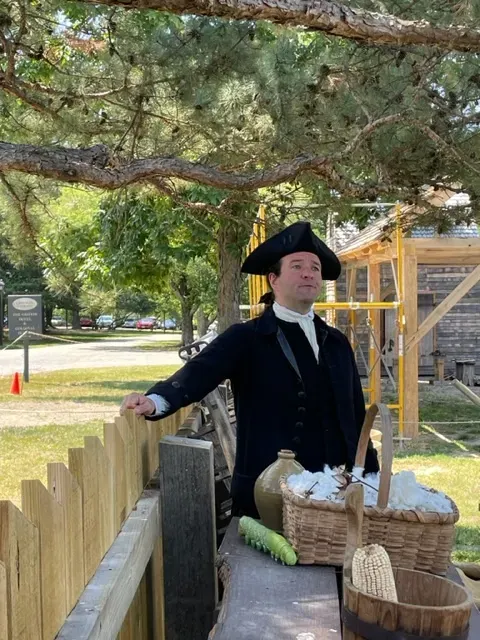
Madison discussing farming.
Sheep in the protest against England.
We hear it all the time around Colonial Williamsburg (CW): dumping tea in Boston made a statement, but true protest hits the pocketbooks.
And textiles made in England equal money, as I mentioned above.
The CW dye and weave team often tell visitors about Washington's loom (because these weren't common at that time). It's a big deal to defy your King the way Washington, Jefferson, and others did in the name of Independence- and sheep are a part of that story!
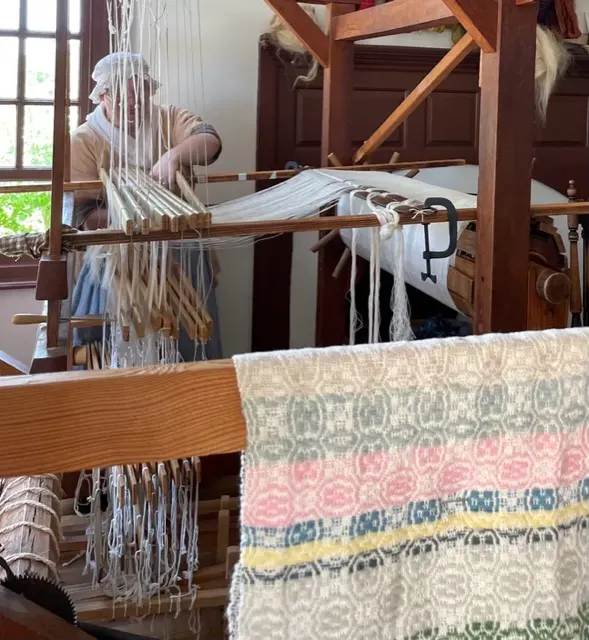
CW weaver at work.
Full circle: Leicester Longwools in the Rare Breeds program!
Timing is everything, and after my visit to the library, I caught our Coach and Livestock staff giving a presentation about the Rare Breeds program. We walked up as the Leicester Longwools were being shown and discussed.
We actually saw one of the presenters pulling her "display" out of a paddock across the way before we entered the property for the presentation. I had to congratulate her on the effort of separating him from the others- it was a task and lots of bleating ensued!
RELATED: The Savvy Farm Life blog post about why sheep bleat.
This breed did originate in Britain (as many things around here did!) and have such an historical impact, it makes sense CW wants to increase the breed. It was developed by a man named Bakewell around 1740.
As research took place for rebuilding the historic area in the 1920's, it seemed that this breed, mentioned in historical documents, was dying out.
According to this article on CW's website, the Leicester Longwools came here in 1990. Specifically: eight ewes, one ram, and six lambs to kick off the program.
The sheep that are used to breed are carefully monitored and selected to ensure the right sheep are paired (no inbreeding, keeping the quality of the wool etc.).
And OMG the lambs!
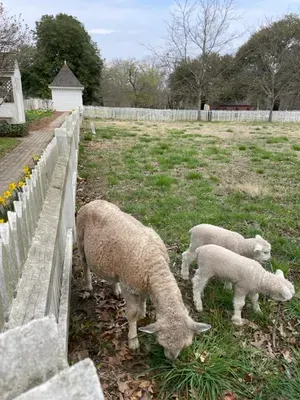
Every spring, I cannot get enough. We lose time watching the lambs, but I call it self-care. Anxiety just melts away around these babies. Bringing them into this world and saving this breed is a process and the team takes pride in doing it right. Read more here.
We took the behind-the-scenes stable tour during lambing season and were able to see one just a few hours old!
RELATED: If you visit CW, check the dates and times for the Rare Breeds presentation by clicking here!
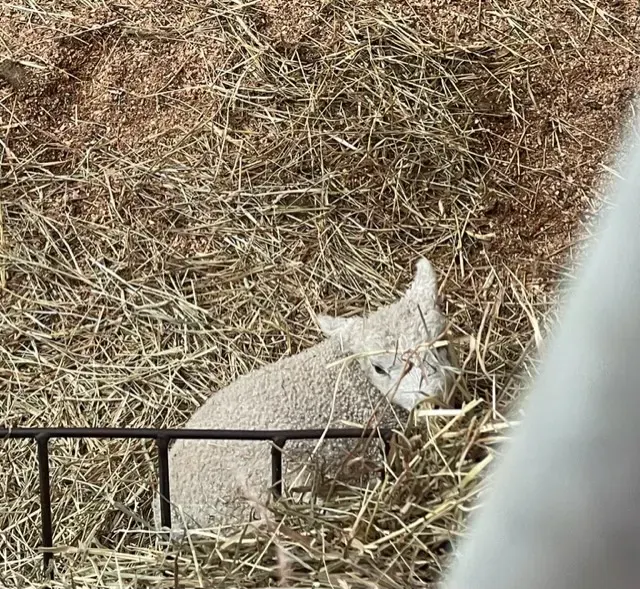
I'm certain I'll learn more about sheep down the road.
This (and many) posts will likely be one that gets updated. If you're interested, check back and scroll the posts because updates will be noted with new "publish dates." If I'm really on my game, I'll add updated posts into my emails I send to subscribers!
Subscribe to this blog using the form on the right-hand side of the page when you use a laptop and below on mobile!
And if you're feeling generous and want to support both my ability to continue writing and my habit for caffeine, use the little coffee cup icon to the right or click below and buy me a coffee! #bloggerlife
There is a huge practical disclaimer to the content on this blog, which is my way of sharing my excitement and basically journaling online.
1) I am not a historian nor an expert. I will let you know I’m relaying the information as I understand and interpret it. The employees of Colonial Williamsburg base their presentations, work, and responses on historical documents and mainly primary sources.
2) I will update for accuracy as history is constant learning. If you have a question about accuracy, please ask me! I will get the answer from the best source I can find.
3) Photo credit to me, Daphne Reznik, for all photos in this post, unless otherwise credited! All photos are personal photos taken in public access locations or with specific permission.
